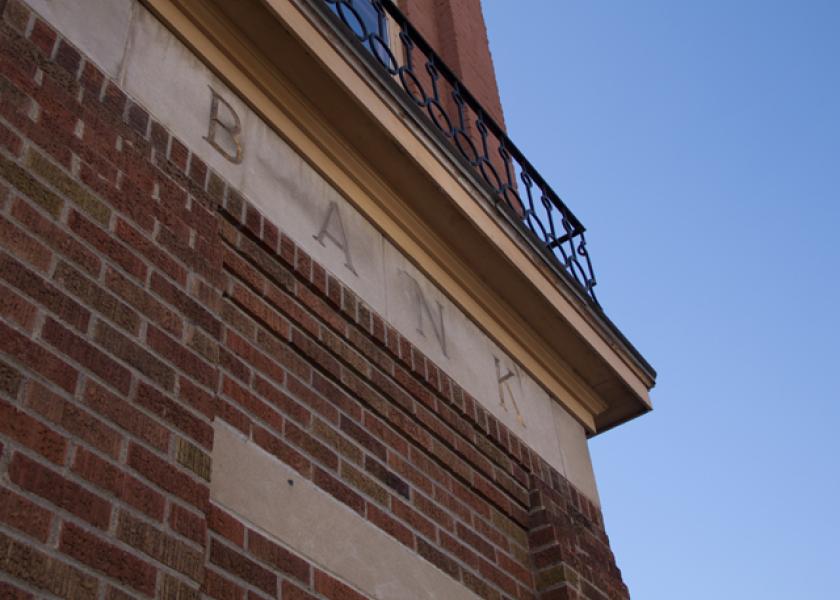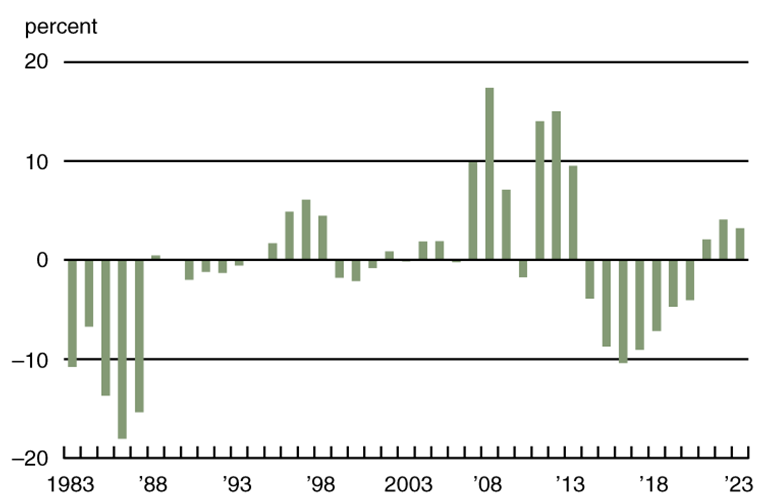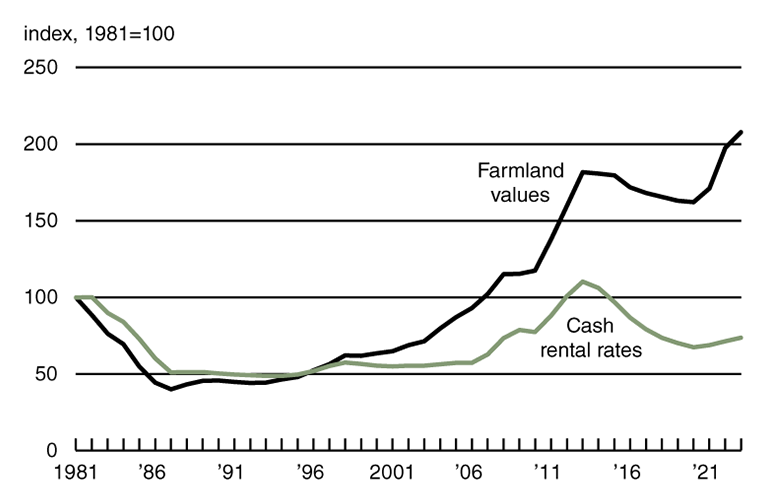Central Corn Belt Farmland Values Surge 10%

The value of Central Corn Belt farmland jumped 10% from a year ago through the first quarter or 2023, according to the Federal Reserve Bank of Chicago. The gain marks District’s farmland values saw a 10 percent increase from a year ago, marking the eighth consecutive quarter of double-digit year-over-year growth. In addition, the value of “good” farmland in the bank’s district rose 2% from the fourth quarter of 2022 to the first quarter of 2023, according to the survey of agricultural bankers.
Survey respondents an annual gain of 11% for Illinois, 22% for Indiana, 7% for Iowa and 15% for southeast Wisconsin. On a quarterly basis, the survey found gains of 2% in Illinois, 8% in Indiana, 1% in Iowa and 2% in Wisconsin.
Despite demand to purchase farmland still being up, there was a smaller amount of farmland for sale in the three- to six-month period ending with March 2023 than in the same period ending with March 2022. Moreover, the number of farms and the amount of acreage sold were down somewhat during the winter and early spring of 2023 compared with a year earlier.
Annual cash rental rates for District farmland saw an increase of 8% in 2023 — down from their gain of 11% in 2022. The vast majority of responding bankers (78%) forecast district farmland values to be stable during the second quarter of 2023, while 15% expect them to be higher and 7% look for them to be lower.
Annual Percent Change in Farmland Values Adjusted for Inflation

Even though the annual gain of 10% in land values is the smallest since the second quarter of 2021, the district still extended its streak of double-digit percentage increases to eight quarters in the first quarter of 2023. After being adjusted for inflation with the Personal Consumption Expenditures Price Index (PCEPI), the year-over-year gain in values for the first quarter of 2023 was 5%. This marks the tenth consecutive quarter of real increases that were at least as large.
One Wisconsin banker noted that “with high demand, strong commodity prices, and fewer farms available for sale,” farmland values continued to rise. For the three- to six-month period ending with March 2023 relative to the same period ending with March 2022, 35% of survey respondents report higher demand to purchase farmland and 16%t reported lower demand. Despite this firm demand for agricultural ground, there was a smaller amount of land for sale compared with a year ago. Twenty-two percent of the respondents report more farmland was up for sale in their areas and 33% reported less. Similarly, the number of farms and the amount of acreage sold were also down in the winter and early spring relative to a year earlier. According to survey participants, the share of acres purchased by farmers in the three- to six-month period ending with March 2023 was like that in the corresponding period ending with March 2022, implying that the share of acres purchased by investors was similar in both periods as well.
Cash rental rates increased 8% from 2022 to 2023, after rising somewhat faster (11%) from 2021 to 2022. For 2023, average annual cash rents for farmland were up 10% in Illinois, 2% in Indiana, 10% in Iowa and 4%t in Wisconsin. After being adjusted for inflation with the PCEPI, cash rental rates were up about 3% from 2022. This was the third consecutive annual increase in cash rents (both in nominal and real terms), following a seven-year stretch of annual decreases. In real terms, the index of farmland cash rental rates peaked in 2013. Even after rising once again in 2023, the index of real cash rental rates was still 33 percent below its level in 2013. By contrast, in the first quarter of 2023, the index of real farmland values moved up—to 14 percent above its 2013 peak (again, see chart 2).
Indexes of Farmland Values and Cash Rents Adjusted for Inflation

Agricultural credit conditions held fairly steady in the during the first quarter of 2023. The availability of funds for agricultural lending in the first quarter of 2023 was nearly unchanged from a year earlier, but demand for non-real-estate loans was down for the 11th straight quarter. At 70.3%, the average loan-to-deposit ratio in the first quarter of 2023 was slightly down from the previous quarter. Repayment rates for non-real-estate farm loans were higher in the January through March period of 2023 compared with a year ago, and the renewals and extensions of these loans were lower.






